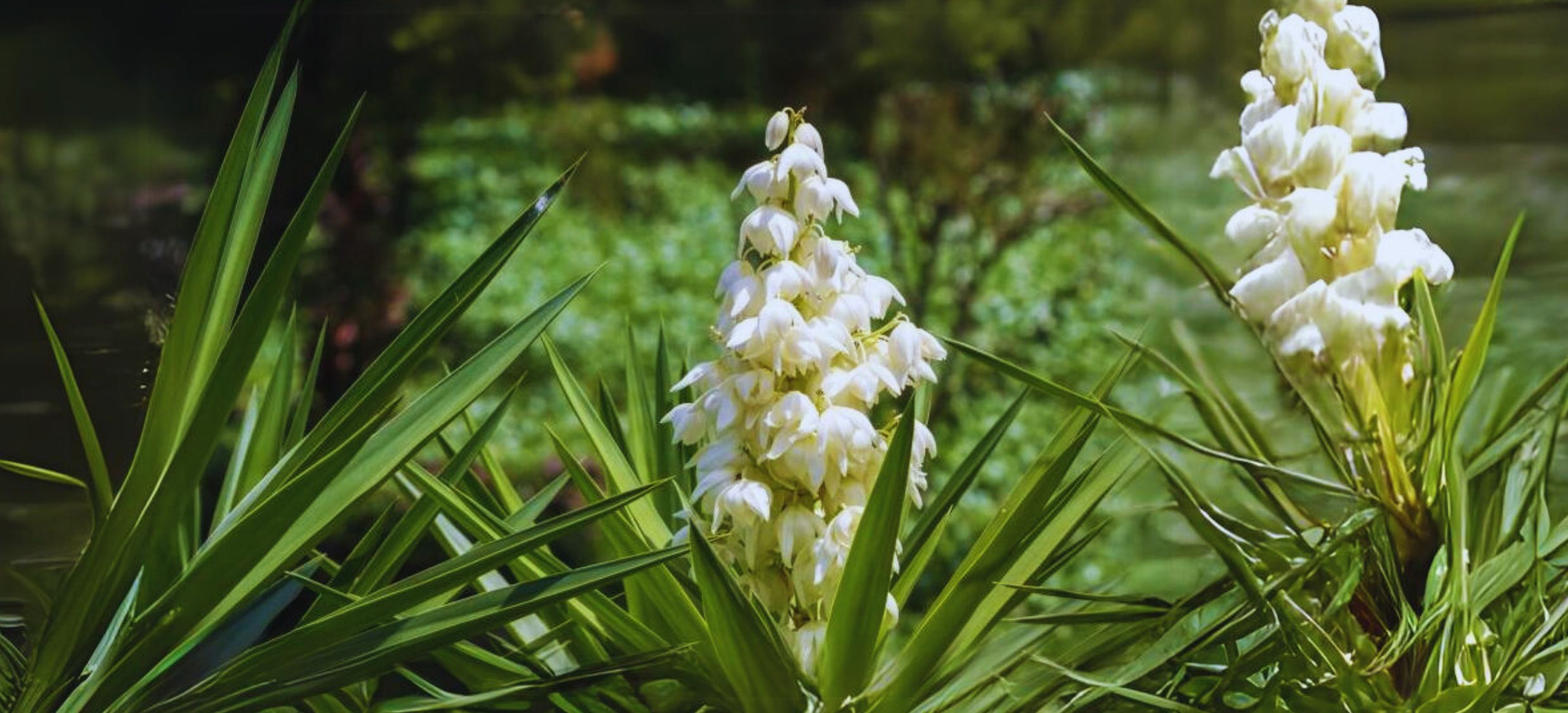Introduction to Yucca
Yucca flowers, with their architectural form and capability to thrive in harsh conditions, have captivated gardeners, landscapers, and nature fanatics for centuries. These first-rate plants, belonging to the genus Yucca inside the own family Asparagaceae, are native to the latest and dry parts of the Americas and the Caribbean.
From the enduring Joshua tree to the extra common family types, plant life offers a charming study in edition, splendor, and software program. This entire manual will explore the world of this, delving into its various species, care requirements, uses, and cultural significance.
The Diverse World of Yucca Plants
Yucca Species and Varieties
The genus contains approximately 40-50 species, each with its precise traits. Some of the maximum famous and broadly recognized species embody:
- filamentosa (Adam’s needle): Known for its sword-like leaves and tall flowering spikes.
- Brevifolia (Joshua tree): An iconic tree native to the Mojave Desert.
- Elephantipes (Spineless): A well-known indoor plant with a tree-like boom addiction.
- Aloifolia (Spanish bayonet): Featuring sharp-tipped leaves and an upright boom sample.
- Gloriosa (Spanish dagger): Known for its decorative fee and hardiness.
Each species has tailored to its local surroundings, ensuing in a big variety of sizes, shapes, and boom conduct. Some plants continue to be fairly small and compact, at the same time as others, like the Joshua tree, can develop to extremely good heights of 40 feet or extra.
Yucca Plant Characteristics
Yucca vegetation are famed for his or her one of a kind look, characterized with the aid of manner of:
Rosettes of lengthy, sword-fashioned leaves.
- Thick, woody stems or trunks in tree-like species
- Clusters of white or cream-colored bell-customary plant life
- Fibrous leaves with various degrees of sharpness
The yucca flower is particularly noteworthy, often appearing on tall stalks that could reach numerous ft above the plant’s foliage. These stylish blooms not handiest add to the plant’s visual attraction but additionally play an important characteristic in its reproduction and ecological relationships.
Cultivating Yucca: From Desert to Garden
Growing Conditions for Yucca Plants
One of the most excellent factors of plant life is their capacity to thrive in hard environments. To successfully grow this, keep in mind the subsequent elements:
- Sunlight: Most species prefer entire solar exposure, despite the fact that a few can tolerate partial color.
- Soil: Well-draining soil is crucial. Sandy or rocky soils are ideal for optimum flowers.
- Water: these are drought-tolerant and like dry situations. Overwatering can bring about root rot.
- Temperature: While many of these are bloodless-hardy, they usually determine on warm climates.
- Spacing: Consider the mature length of your preferred species while planting to allow ok room for growth.
Yucca Plant Care and Maintenance
Proper care ensures that your yucca plant remains healthful and colorful:
- Watering: Allow the soil to dry out completely among waterings. In wintry weather, lessen watering frequency.
- Fertilization: they normally do not require a lot of fertilizer. A mild software of balanced, slow-launch fertilizer in spring can sell growth.
- Pruning: Remove dead or damaged leaves as wanted. For tree-like those, prune to hold desired shape and duration.
- Pest manage: While typically pest-resistant, they’re able to on occasion fall victim to scale insects or weevils. Monitor and treat as crucial.
Propagation Techniques
Yucca plants can be propagated via numerous techniques:
- Seed propagation: Collect seeds from ripe fruit and sow in properly-draining soil.
- Offsets or “domestic dogs”: Many species produce small offsets at the bottom, which may be separated and replanted.
- Stem cuttings: For a few species, specially people with visible trunks, stem cuttings may be rooted to provide new plants.
- Division: Mature clumps of this can sometimes be divided to create more than one flower.
The Yucca Flower: A Marvel of Nature
The flower isn’t always just a beautiful addition to the plant; it’s far from an ecological surprise. These large, creamy-white blossoms typically seem in the past due spring or early summer, developing on tall stalks that may reach wonderful heights. The vegetation is bell-shaped and often fragrant, attracting numerous pollinators.
What makes the flower truly precise is its specific relationship with the moth. This symbiotic dating is so specialized that many species can first-class be pollinated by their specific moth associate. The moth collects pollen from one flower and intentionally pollinates every different, ensuring its non-public larvae have a meals source even as permitting the plant to reproduce.
Yucca in Landscaping and Design
Outdoor Landscaping with Yucca Plants
Its plant life has turned out to be more and more well-known in landscape design, specially in regions with warm, dry climates or for xeriscaping responsibilities. Their architectural shape and low protection necessities cause them to extremely good alternatives for:
- Focal points in rock gardens
- Drought-tolerant garden beds
- Natural privateness displays or obstacles
- Southwest or Mediterranean-style landscapes
- Accent flowers in cutting-edge or minimalist designs
When incorporating this into your panorama, remember the following layout concepts:
- Contrast: Pair the strong, vertical strains of this with softer, mounding plant life for visual hobby.
- Repetition: Use multiple plants to create a rhythm on your lawn layout.
- Scale: Choose species that complement the dimensions of your place and different plantings.
- Texture: Combine the coarse texture of its leaves with high-quality-textured plant life for stability.
Yucca as Indoor Plants
Some species, especially elephantipes (spineless), have obtained a reputation as indoor vegetation. When grown interior, offer numerous benefits:
- Air purification: Like many flowers, the ones can assist in decorating indoor air brilliantly.
- Low upkeep: Their drought-tolerant nature makes them forgiving of occasional overlook.
- Architectural interest: The robust shape of plant life can function as a hanging format element in interior areas.
To effectively grow indoors:
- Provide vibrant, indirect slight or place close to a south-going thru window.
- Use nicely-draining potting soil and a box with drainage holes.
- Allow the soil to dry out among waterings.
- Maintain moderate humidity ranges and outstanding air flow.
The Versatile Uses of Yucca
Beyond their ornamental fee, plants have an extended statistics of practical makes use of:
Traditional and Modern Medicinal Uses
Various parts of the yucca plant were utilized in traditional medication for hundreds of years.
Some capability medicinal applications encompass:
- Anti-inflammatory houses: Its extract has been studied for its capacity to reduce irritation in conditions like arthritis.
- Digestive fitness: Some conventional uses contain yucca root for digestive troubles.
- Skin care: Yucca extracts are once in a while applied in natural pores and skin care merchandise for their ability to soothe homes.
It’s crucial to have a look at that even as traditional uses are great, medical studies on yucca’s medicinal homes is ongoing, and consultation with a healthcare professional is counseled earlier than the use of yucca for medicinal functions.
Culinary Applications
Several yucca species have suit for human intake parts which have been implemented in diverse cuisines:
- Yucca flora: Can be eaten uncooked in salads or cooked in soups and stews.
- Yucca fruit: Some species produce fruit suitable for eating fruit, though they’re no longer normally fed on.
- Yucca root: Not to be stressed with cassava (also referred to as yuca), some roots are healthy for human consumption while well organized.
Fiber and Material Uses
The fibrous nature of yucca leaves has introduced approximately diverse sensible programs:
- Rope and cordage: Native Americans have prolonged used fibers to create sturdy ropes and cords.
- Textiles: Yucca fibers can be woven into fabric or applied in basket-making.
- Soap and shampoo: The roots of a few species include natural saponins, which can be used as a soap substitute.
Yucca in Culture and History
The yucca plant, in particular the Joshua tree ( brevifolia), holds large cultural and historic importance:
- Native American traditions: Many indigenous tribes have used this for food, remedy, and substances for hundreds of years.
- Symbolic importance: The Joshua tree, named by the way of Mormon settlers, has come to be an iconic picture of the American Southwest.
- Environmental indicator: Yucca plants are often studied as signs of weather alternate because of their sensitivity to environmental shifts.
Conservation and Environmental Impact
As hardy as yucca flowers are A few species face annoying situations due to :
- weather change
- habitat loss
- over-harvesting.
- Joshua tree conservation: Climate trade threatens the survival of Joshua wooden in their local variety.
- Sustainable harvesting: Efforts are being made to make sure sustainable practices in harvesting these for business uses.
- Garden escapees: In a few areas, superb species have become invasive even as they are introduced outdoors to their nearby range.
Conclusion
From the towering yucca tree to the compact indoor types, vegetation provides a fascinating mixture of beauty, resilience, and software program. Their capacity to thrive in harsh situations makes them extremely good choices for water-sensible landscaping, at the same time as their setting form provides a hint of unusual splendor to any lawn or interior location.
As we hold to comprehend and study the one remarkable flowers, the yucca’s importance in horticulture, ecology, and human manner of life only grows. Whether you’re a gardener looking for a low-protection announcement plant, a conservationist interested in barren region ecosystems, or honestly an admirer of nature’s adaptability, the area of vegetation gives countless possibilities for exploration and appreciation.
Read more: How to successfully Grow Peonies: A Comprehensive Guide










4 thoughts on “Yucca plants: Grow your own Drought-Tolerant Beauty”